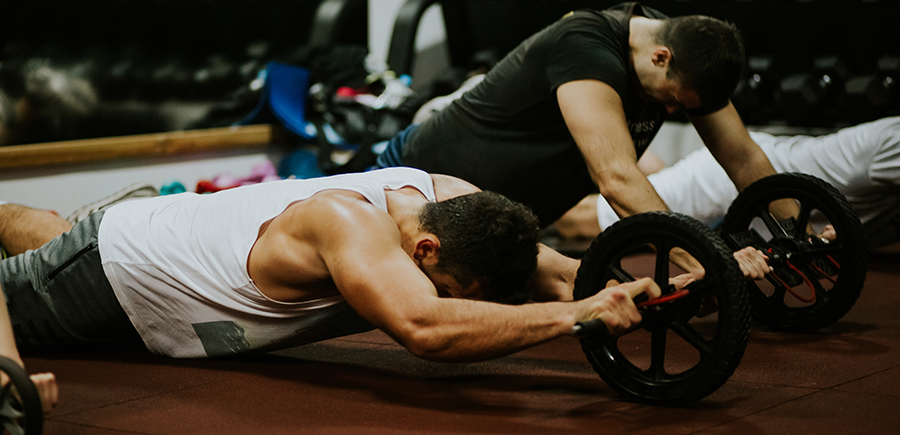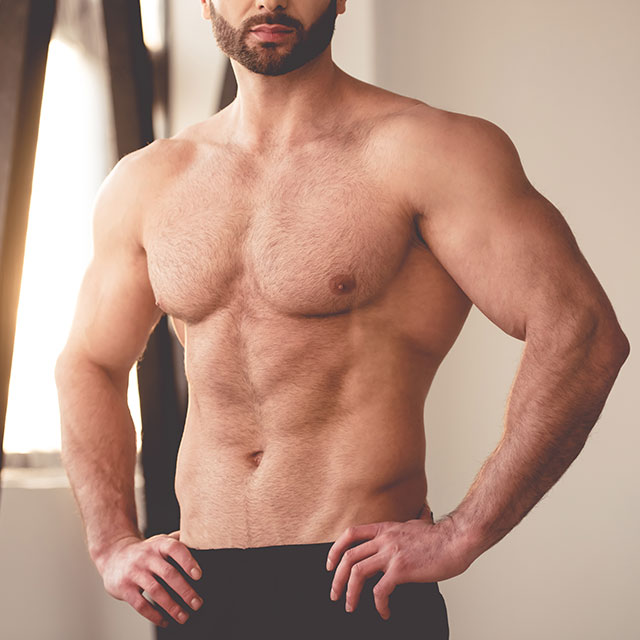Functional Training in London
WhiteWolfFit > Functional Training in London


Functional training is not necessarily a new idea, but it has taken off in recent years. You may have heard people waxing lyrical about the many benefits of functional training, over and above other types of workout programs.
Functional training has been popularized by CrossFit, but functional training can be achieved by anyone, pretty much anywhere. We are going to take you through what functional training is, what the benefits are, and everything you need to know about how to get started doing functional training yourself (including at home).
The clue really is in the name. Functional training involves completing exercises that are functional in nature.
In this case, functional means that they are exercises that are useful for everyday activities. Functional training exercises can be directly mapped onto real-world activities, such as lifting a heavy box, getting up from lying down, or pulling something. The idea for functional training originally came from rehabilitation programs. With rehabilitation, the goal is for patients to be able to return to their normal activities, so exercises are goal-orientated.
Functional training exercises are generally compound movements. In other words, you need to use multiple muscle groups in order to complete the exercise. This can be contrasted with exercises that focus on a single muscle group. For example, bicep curls. Of course, for most of human history, people didn’t repetitively curl and uncurl their biceps or seat themselves in an expensive gym machine to move their legs up and down.
They would lead active lives and their fitness (and muscles) would grow from the activities they performed for work or leisure.

For booking and consultation please contact me on Instagram @white_wolf_fitness Facebook whitewolffit Check my prices
If you’re considering adding functional training to your fitness regime, you might be wondering what the benefits of it will be. Functional fitness can enhance both your fitness and your everyday life.
Because functional training focuses on exercises that mimic everyday activity, the benefits of the training will be noticeable in your day-to-day life. Whenever you have to lift something heavy and put it on a shelf, or run to catch the bus or jump up quickly from lying down, you will be able to feel how much easier it is after some functional training.
If you are concerned about putting too much pressure or force on your joints, through activities such as running, functional training can be a good option. It is low impact, but will still improve your fitness.
Functional training can be adapted to any fitness level. It can be made as difficult or as easy as you need it to be. Functional fitness is suitable for everyone from complete beginners all the way up to athletes.
Because so many of the functional compound movements involved in functional training rely on core strength and large movements, functional fitness doesn’t just benefit your strength levels. It also improves balance, flexibility, and coordination, endurance, and posture.
Functional training teaches your body to complete common movements with ease, so when you are confronted with those movements outside of training you are able to complete them properly, without injuring yourself. The increases in balance, coordination, and flexibility also reduce your risk of having an accident.

In short, yes. You can build muscle from functional training. For example, an Olympic weight-lifter doing a clean-and-press is actually completing a functional movement. They are lifting something up from the floor and above their head.
The same movement you would complete when placing a box on a high shelf. Of course, that is an extreme example, but the principle is the same. Just because a functional movement isn’t isolating a single muscle group, that doesn’t mean it isn’t building muscles.
Of course, not all compound movements build muscle. Many of them help with overall fitness, flexibility, and coordination. But the whole point of functional training is to have a good balance of everything. And there are plenty of exercises that will increase your muscle mass.
Of course, not all compound movements build muscle. Many of them help with overall fitness, flexibility, and coordination. But the whole point of functional training is to have a good balance of everything. And there are plenty of exercises that will increase your muscle mass.
There are lots of variations of the simple squat, but at its most basic it is simulating you lowering down to the floor and back up again. It works your glutes, quads, and your core.
Pushing exercises in any form are common parts of functional training regimes. They bring onboard a wide variety of muscle groups and can be useful in everyday life.
Pulling exercises are all really common in functional fitness. Widely regarded as the most difficult bodyweight exercise there is, if you can master a pull up that means that your upper body and core is strong.
Sitting up is a functional movement that we complete on a regular basis, but by focusing on sit-ups as part of your fitness regime you will really strengthen your core and your abs.
You probably lunge a lot more than you realize. When you run around tidying the house before bedtime, you’ll probably be doing a fair amount of lunging. Lunges are also great for improving your core and lower body strength, and for improving your balance.
As you will have seen from our examples, a lot of functional training movements don’t require weights and can be completed just with your own bodyweight. If you are a beginner to exercise, you won’t need any extra weights to get the improvements from functional fitness. For most people, however, adding weights can be important later on when you want to improve your fitness even further. Weights can be added to many bodyweight exercises, such as holding a weight while you squat, or you can do dedicated weight exercises, such as the farmer’s walk.
Functional training is for all fitness levels because it is so scalable. You complete functional training to the limit of your current fitness level. Then, as your fitness improves, you can scale up the difficulty by adding weight, increasing the number of reps you do, or increasing the length of time you do each exercise.
It can also be useful for athletes. By simulating the sorts of movements that would be common in sports, you can train those muscle groups to be at the very best of their ability. This can be harder to do if you focus on isolation exercises because it can be difficult to work out exactly which muscle groups are being brought in to complete the movement.
One of the best things about functional training is that can be done pretty much anywhere. You don’t need a single piece of fancy gym equipment. You just need you, and maybe some weights. If you don’t have any weights, you could use bottles of water, tins from your cupboard, or even a sack of potatoes.
There are lots of resources on the internet where you can find functional exercise program, as well as books and apps. Pool together all of the information that you can, choose a program and set yourself a schedule for your fitness training.
Burpees as a compound movement bring in most areas of your body. When you lower to the floor, you are completing a negative push up, which strengthens your upper body and especially your triceps and your chest. Then when you bring your knees to your chest, you are strengthening your core. Finally, you complete an explosive jump which works your entire lower body. Not only that, but the whole movement is also a cardio exercise.
Burpees as a compound movement bring in most areas of your body. When you lower to the floor, you are completing a negative push up, which strengthens your upper body and especially your triceps and your chest. Then when you bring your knees to your chest, you are strengthening your core. Finally, you complete an explosive jump which works your entire lower body. Not only that, but the whole movement is also a cardio exercise.
Pull-ups are a really efficient way of working three major muscle groups in your back – your lats, delts, and rhomboids. It works a variety of muscles in your arms depending on how you hold your grip, and it also helps to strengthen your core. If you really want to strengthen your upper body, the pull-up is a much more efficient way of doing it than isolating each of those muscles in turn.
A functional training workout usually looks like a circuit. So you will run through a variety of compound movement exercises either for a set amount of time each or a set amount of reps. There is often a variety of bodyweight exercises, as well as exercise that incorporate weights such as dumbells and kettlebells. Resistance bands are also a common piece of equipment seen in a functional fitness.
Just like with any fitness training program, you should factor in rest days. Rest days are important for giving your muscles time to repair themselves between workouts. Functional training 5 days a week with 2 days of rest is a good rule of thumb if you really want to maximize the fitness benefits that you will get from it.
Because the compound movements involved in functional training are usually big movements that incorporate lots of muscle groups, it can help you to burn calories efficiently. A higher calorie burn will help to burn fat more quickly. Functional fitness also builds muscles, which can also help to burn fat. The more muscle you have, the more calories you burn even when you’re doing nothing.
One of the greatest fitness myths is that you can target fat burn to certain areas of the body. You can’t. The only way to lose your belly fat is to lose fat all over your body. So if you want to lose belly fat, your best bet is to choose an exercise that will efficiently burn as many calories as possible. Functional exercises are great for this because it uses big movements that burn a lot of calories.